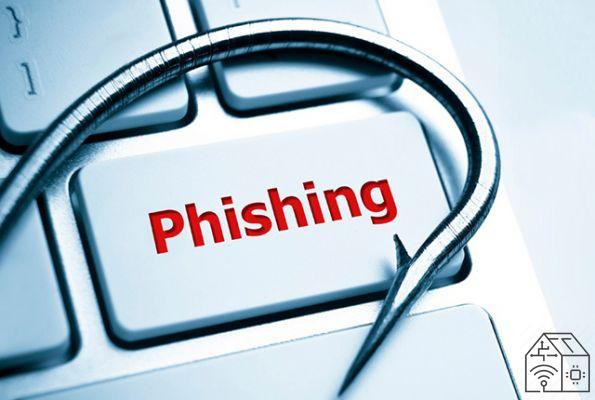
Su Facebook the fear of being victims of is rampant again Phishing, or the fear that your personal data are no longer safe. Here is our guide to survival on social media avoiding unpleasant inconveniences.
Facebook, yet another phishing attempt
This is certainly not new, the most used social platform in the world is often used to spread easily malware or to implement attempts to Phishing of various kinds. Much more immediate than e-mail, it seems the preferred means of attackers.
Accomplice of this rapid spread is certainly the unpreparedness (unfortunately) of many Facebook subscribers. Indeed, the probability that a content goes viral it is very high. Be it a photo, a video or a fake news. Likewise, sharing or clicking on a wrong link can have very serious consequences.
The latest threat that has hit the social network is characterized by a series of phishing attempts, namely the theft of personal data. Normally, this is done by directly asking the victim to enter their personal data.
The unsuspecting user tends to fall for it because he often finds himself in front of screens very similar to the original ones. For example, a typical phishing attempt is linked to online bank account credentials. Through a fake screen, in all respects similar to the original one of your bank, the victim is invited to enter their data. It only takes a few seconds and the bad guys on duty come into possession of the information.
What is happening in these hours on Facebook?
Many users have received private messages containing from their contacts a link to a video. The temptation to open it is very strong because the preview shows the profile photo (and the name and surname) of the potential victim.
Once clicked on the malicious link, the user is redirected to one fake Facebook page which requires access data in order to view the video. Needless to say, once the data is entered it will be stolen and the phishing attempt continues to spread like wildfire.
These are threats now seen and reviewed on the platform. However, large numbers of subscribers continue to fall for it, making the malicious strategy palatable.
What to do if you have clicked on the link
In case you have not been able to resist the temptation to open the elusive video, and have also entered your data, there is a way to fix it. The first thing you will need to do is change Password to your account Facebook and then go to the privacy settings and close all open sessions of which you do not know the origin.
In this way, the data you have granted (as long as it is limited to credentials) will no longer be usable. Changing your Facebook login password is recommended whenever you have doubts that you have entered your information on unsafe sites.
A little care can prevent privacy violations
Protecting yourself on Facebook is actually very simple, just pay a little attention to not risk be a victim of malware and phishing attempts. In addition, a few small precautions can help you prevent unpleasant situations.
First of all, it is good to activate the two-step account verification. This means that every time you log into Facebook from an unknown device, you will be sent an SMS with a code to enter in order to complete the login.
Check the source what you share is always important. Whether it is news or a link relating to multimedia content (or presumed such), it is absolutely necessary to avoid clicking or sharing without being sure of its origin.
Another favorite method of attackers is to create fake Facebook profiles and send thousands of friend requests. Profile photos in 90% portray beautiful and provocative girls and very often it is difficult to desist from accepting the invitation to add them to your contacts. The purposes of this practice are usually of two types:
- Spreading more or less real news: it is a real business. In fact, if the fake profile reaches a good number of friends, it can be proposed to blogs or websites that need to disseminate their content as a form of advertising. Basically, the shares on the profile created ad hoc for the purpose are sold;
- Luring users and threatening them: the second purpose of these profiles is to deceive the victim by promising him very often experiences of sexting or similar. The goal is for the user to go so far as to show themselves in a compromising way on webcam. Immediately a snapshot of the screen is taken which will be used to extort money by blackmailing the material on the Web, compromising the victim.
Finally, all those nice tests that are rampant on the platform are meant to collect data. It is not essential, after all, to know in which year our departure will be or who loves us in secret. To have this information we will have to offer in exchange access to our profile and to all sensitive data contained within it.
Protecting yourself on social media is simple. We are the first security filter, just pay attention and avoid trusting anything that is offered to us on the platform. The fact that it comes from a known contact is absolutely not safety index.


























